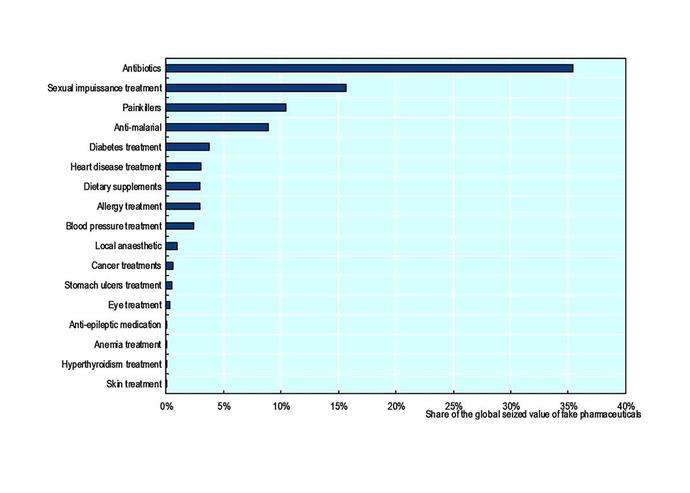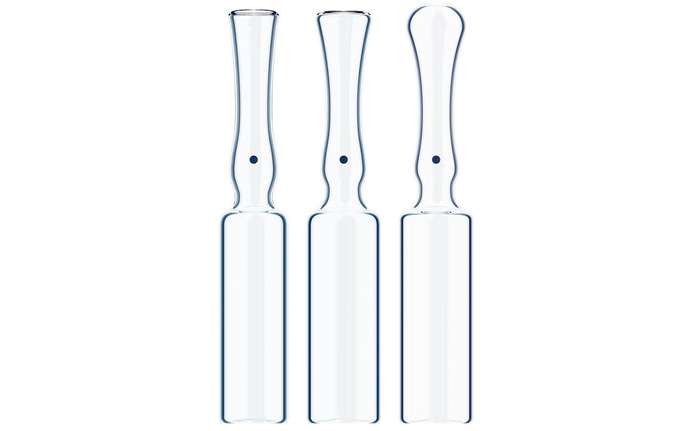
Protecting patients from counterfeit drugs: Ampoules AC, the SCHOTT Pharma solution
The increasing number of counterfeit medications is raising alarm around the world. A study by the World Health Organization (WHO) has found that one in 10 drugs in the market are counterfeit1. But what are counterfeit drugs? The definition of “counterfeit drugs” is medication that:
- Does not include the correct active ingredient or any active component
- Has an incorrect dosage of the active ingredient
- Contains illegal or dangerous ingredients
- Includes contaminants due to unhygienic manufacture
According to research published in 2019 by the Organization for Economic Cooperation and Development (OECD) and the European Union Intellectual Property Office (EUIPO)2, some of the most counterfeited drugs seized by customs are:
- antibiotics
- sexual impuissance treatments
- analgesics
- anti-malarial drugs
- diabetes treatments
- medications for heart disease
- dietary supplements
- antiallergics

Most counterfeit types of pharmaceuticals seized by customs
However, perhaps the most alarming fact is that it’s not just generic medication that is counterfeited, but also critical drug innovations, such as medication to treat HIV and certain types of cancer.
How counterfeit drugs can affect patients, pharmaceutical companies, and public-health systems
There are multiple consequences of using counterfeit drugs. The first, and most obvious is the risk they can pose to human health. Since the patient is not receiving the precise medication to fight a disease, they could increase its severity, as well as contribute to antimicrobial resistance and drug-resistant infections. In 2019, it was reported that 250.000 children could die every year after receiving counterfeit drugs intended to treat malaria and pneumonia4.
Drug counterfeit can also contribute to the loss of confidence in medicines and health systems - an already rising condition.
In addition, these medications can have a negative impact on the reputation of a pharmaceutical company, resulting in the loss of intellectual property rights and billions of dollars in sales. The number of counterfeit drug incidents is growing by two digits annually.
Falsified medication has been exceedingly difficult to detect since the design of the container and secondary packaging appears almost identical to the original product.
How to identify counterfeit drugs. Ampoules AC, the best protection
Considering all the challenges of counterfeit drugs and the importance of tackling the problem for the pharmaceutical industry, SCHOTT Pharma has developed Ampoules Anti-Counterfeiting (AC).
Ampoules AC are available in a wide range of forms and formats, from 1-30ml, and with three different break-systems: One-Point-Cut (OPC), Scoring (SCO), and Color Break Ring (CBR).

Ampoule forms (from left to right) B, C and D with break-system OPC
What’s unique about this ampoule is the material used for its printed features. While the OPC and CBR ampoule break-systems feature a painted dot or a ring, ampoules may also contain printed text or a logo in the body, as well as rings on the stem for identification purposes during fill and finish or in the market.
Ampoules Anti-Counterfeiting are manufactured using a special ink with light-emitting particles (LEP). Made of inorganic substances, this ink can be used for printing the OPC dot, CBR/ ID rings, or the text. Since the light-emitting particles are only visible with a special reader, these markings help to retain the drug’s authenticity. Furthermore, the ink is available in a range of colors to identify different applications, eliminating the need for re-registering the product.
Ampoules Anti-Counterfeiting supports the global fight against counterfeit medicines, protecting patient health in countries where it’s needed most. Ampoules AC also safeguard the reputation of the world’s national healthcare systems and pharmaceutical industries, enabling them to continue offering medications that tackle current and future health threats.

Victoria de la Torre
Global Product Manager ampoules